Difference between revisions of "Translations"
| Line 1: | Line 1: | ||
| − | __TOC__ | + | __TOC__ |
Translations perform two important tasks: Manipulate the numbers, and perform call routing. | Translations perform two important tasks: Manipulate the numbers, and perform call routing. | ||
Revision as of 14:32, 8 December 2013
Contents
Translations perform two important tasks: Manipulate the numbers, and perform call routing.
Before explaining in detail the process of routing, table 1 summarizes the most relevant definitions to understand the process.
Table 1. Definitions.
| Term | Definition |
|---|---|
| ANI | Calling partyâs phone number.
|
| DNI | Called partyâs phone number. |
| Fast Busy | It is a partition where no provider is assigned and the call is not connected. |
| Gateway List | List of IP addresses associated with the suppliers. |
| Partition | A partition groups the common routing policies for one or more carriers. The purpose of a partition is to deliver the quality service to a group of customers with needs identified with the routing policies defined for that partition. |
| RG | Resource Group. The RG defines the status, direction, translations and other technical parameters needed to identify a carrier in the network. The RG defines routing and numbering processing for a customer. |
| RG In | Clientâs RG. |
| RG Out | Providerâs RG. |
| Route | A route is a list of RG Out that defines a path to a destination. |
In terms of numbering, the Clientâs ANI and DNI are adapted to your technical requirements through the Calling Pre Translation and Called Pre Translation processes. Once they reach your network resources and a provider is selected, the ANI and DNI are adapted to the providerâs technical requirements through the Calling Post Translation and Called Post Translation processes.
In terms of routing, itâs in the translation process where a route is selected so the call reaches its destination.
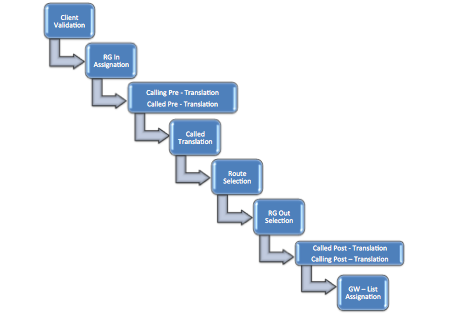
An explanation of the routing process is explained a follows:
- Client Validation - For inbound calls, once a call reaches your network, the first step is to verify that the clientâs IP address and the originating port match the IP and port configured in the inbound Resource Group for that client. The system also verifies that the client sent the call to the Proxy IP address configured in the RG.
- Resource Group Assignment - Once the client has been validated, the inbound resource group is assigned. In the RG setup the Calling Pre Translation (not mandatory), Called Pre Translation (not mandatory) and Called Translation (mandatory) tables that the client associated with this RG In must follow, are defined.
- Calling Pre translation - In the Calling Pre Translation process the ANI is modified, if needed, to meet your network requirements. It is also here where the call might be forwarded to a specific partition depending on the ANI, if required.
- One example of what can be done using the Calling Pre Translation is to delete a prefix (for example 011) from the original ANI.
- Another example is when you have extensions in different branches of your company, connected to your network. For routing purposes, such extensions are seen as customers, therefore it is required that the extension number where the call was generated is changed into a specific phone number.
- In other cases the ANI is used to prevent fraud. You can block a number or a series of numbers in the partition, by forwarding the call to the Fast Busy partition.
- There may be cases where the ANI is analyzed but no change is made in the numbering. Here, depending on the ANI received in the partition, you could forward the call to another partition, for example, to assure premium quality routes.
- It may be the case that no ANI format adjustment or partition forwarding is required. Therefore the Calling Pre Translation table query is not necessary.
- Called Pre Translation - In this step the DNI (dialed number) format is adjusted, if needed, to match your internal format. An example is when the prefix 011 or +1 is removed from the dialed number.
- You can block calls to a certain number or series of numbers by forwarding the call to a Fast Busy partition. Or you can forward the call to a Fast Busy partition when the call does not include a distinctive prefix agreed with your customer in the DNI.
- You also use a Called Pre Translation record to forward the call to a given partition, for example, to assure premium quality routes.
- It may be the case that no DNI format adjustment or partition forwarding is required. Therefore the Called Pre Translation table query is not necessary; it depends on the clientâs configuration in the RG In.
- Called Translation - In the Called Translation process a call can pass for various partitions until it reaches its destination, which can be a route with a list of RG Out or a call blocking.
- If a route is assigned in the process of Called Translation, the leastâcost order, the percentage, or a mix of both is applied, resulting in the selection of a single RG Out for the specific call.
- In the RG Out the tables Called Post Translation and "Calling Post Translation" are defined.
- Calling Post Translation - In Calling Post Translation the ANI is modified to adjust it to the providerâs requirements. An example is when your client does not send the ANI but your provider requires one. In that case the system creates an ANI, according to the configuration in the Calling Post Translation table.
- Another example is when your provider requires that you remove or add the + sign to the ANI or change the complete number. Also, when one of the extensions in your network is making a call, the provider might need to receive a phone number, not an extension number.
- It may be the case that no ANI format adjustment is required. Therefore the Calling Post Translation table query is not necessary; it depends on the clientâs configuration in the RG Out.
- Called Post translation - In Called Post Translation the DNI is adjusted to fulfill the providerâs requirements. An example is when your provider requires that the DNI is preceded of a certain code for validation purposes.
- In the Post Translation process the GW list is assigned to the RG Out and with it, the outgoing IP address and port.
The following table is applicable when creating a record in the translation tables:
Table 2. Characters * and ? in the Translation Records.
| Character | Action |
|---|---|
| * | The numbers represented by the star character are not altered in the translation. The numbers or symbols (+) preceding the star character are subject to the translation. They can be replaced, complemented or deleted. A single * in this field means that the translation is applied to every ANI in that particular partition. A number followed by an * denotes that the adjustment is performed to the digits before the *. |
| ? | The digits of a number that are represented by a question mark represent not only the digits from 0 to 9 but also any character, like the + or #. For example, the number 70?? includes the numbers 7000 through 7099 and the translation is applied to the whole series. It applies also to number that include characters, like 700#. |
Partitions
This table refers to the Called Translation partitions. The list of partitions created in the switch is shown in the table of figure 4.

The fields in this table are:
- Partition - This is the number assigned to the partition.
- Description - This is a brief description of the partition.
To add a new partition:
- Click âAddâ to create a new partition. A new row will appear (Figure 5) and the cursor will be located in a new cell under the header âPartitionâ.
- Note: The partition number and dialed number combination is unique, this means that there are no two partitions with the same dialed number.

- Enter the partition number you want to create and click outside the cell to exit. The cell will display a red flag in the upper left corner to denote the addition or change (Figure 6). If you enter a partition that does not exist, the system will display the alert ââPartition: xâ already existâ.

- Double click on the field under âDescriptionâ to activate the cell. Enter a description of the new partition.
- Click âSaveâ to confirm the partition addition or âCancelâ to discard it. The following window will appear:
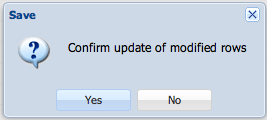
Note: The cell will display a visual alert if the partition number already exists (Figure 8).

To delete an existing partition:
- Select the check box or check boxes next to the partition you want to delete.
- Click âDeleteâ. The following window will appear:
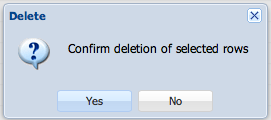
- Click âYesâ to confirm the deletion or âNoâ to discard it.
Note: You can select all the partitions by clicking âSelect allâ and then delete the whole group.
To edit an existing partition:
- Double click on the description and edit the field. Click outside the cell. The cell will display a red flag in the upper left corner to denote the change.
- Click âSaveâ to confirm the partition edition or âCancelâ to discard it. The window of figure 9 will appear.
- Click âYesâ to confirm the edition or âNoâ to discard it.
If you have a large amount of partitions, you can make use of the buttons ![]() to move across the partition list.
to move across the partition list.
Use the button ![]() to refresh the web page. You can decide to display 50, 100, 500, or all the partitions using the drop-down list next to âRowsâ.
to refresh the web page. You can decide to display 50, 100, 500, or all the partitions using the drop-down list next to âRowsâ.
Calling Pre Translation
Calling Pre Translation refers to the ANI formatting process to adjust the numbering to your network requirements.
Figure 10 shows the table that comprises the Calling Pre Translation records that run in your switch.

The fields in the table are:
- Dialed Number - This field refers to the ANI from where the call is being generated.
- Translated Number - There are two possible values here: the formatted ANI, which fulfills the numbering requirements of your network or a blank cell that denotes no change in the ANI.
- Description - Type here a brief explanation of the record or specific annotation about it.
- Fw. Partition - There are two possible cases here: the number of a partition in the Called Translation table where the call is forwarded, or a blank cell that denotes no change in the partition.
- Modified by - The system automatically fills this field with the userâs login name who performed the addition (or modification).
- Modified - The system automatically fills this field with the date of the change.
To perform a custom search, use any combination of the search fields. The fields Dialed Number and Translated Number are supplemented by a window that helps refine the search. Make use of the options <, >, =, <=, > =, Begins with, and Containing, to perform a search of a specific number or a range of numbers.

To create a Calling Pre Translation record:
- Click âAddâ to create a new Calling Pre Translation. The following window will appear:

- Enter the partition number. If the partition you entered is not created in the switch, you will see a text box saying âANI Pre Translation âxâ already existâ.
- Enter a description of the record if required.
- Click âAddâ to create a new record in the translation.
- Enter the Dialed Number subject to translation. The cell will display a red flag in the upper left corner to denote the addition or change (Figure 13).

- Enter the ANI new format under Translated Number (if required).
- Double click on the field under Description and enter a brief explanation of the translation if required.
- Double click on Fw. Partition and enter the partition in the Called Translation if you are going to redirect the translated number to another partition.
- The system will fill the fields Modified by and Modified with the user login name and date of the addition.
- Add more registers to the Calling Pre Translation if needed and repeat the actions.
- Click âSaveâ to confirm the new Calling Pre Translation record or âCancelâ to discard it. In both cases a confirmation window will appear.
Note: If you do not enter data on a cell that should be filled, the system will display a visual alert on the cell and a text box saying, âThis field is requiredâ.
To delete registers in a Calling Pre Translation record:
- If you want to delete a line in the Calling Pre Translation record, select the check box of the Translation you want to edit.
- Click on x to delete specific registers of the Calling Pre Translation record.
- Click âSaveâ to confirm the changes or âCancelâ to discard them.
To edit an existing translation:
- Select the check box of the Translation you want to edit.
- Double click on the fields you want to edit. The fields that can be edited are: Translated Number, Description, and Fw. Partition.
Called Pre Translation
Called Pre Translation refers to the DNI handling process to adjust the numbering format to your network requirements.
Figure 14 shows the table that comprises the Called Pre Translation records that run in your switch.
This table has the same structure as the Calling Pre Translation table and the same definitions apply here except for âDialed Numberâ that refers here to the DNI that is going to be formatted.
The creation, deletion and edition of Called Pre Translation records follow the same steps explained in Calling Pre Translation.
Called Translation
In the Called Translation process the callâs ANI and DNI are already formatted and a route is associated depending on the destination.
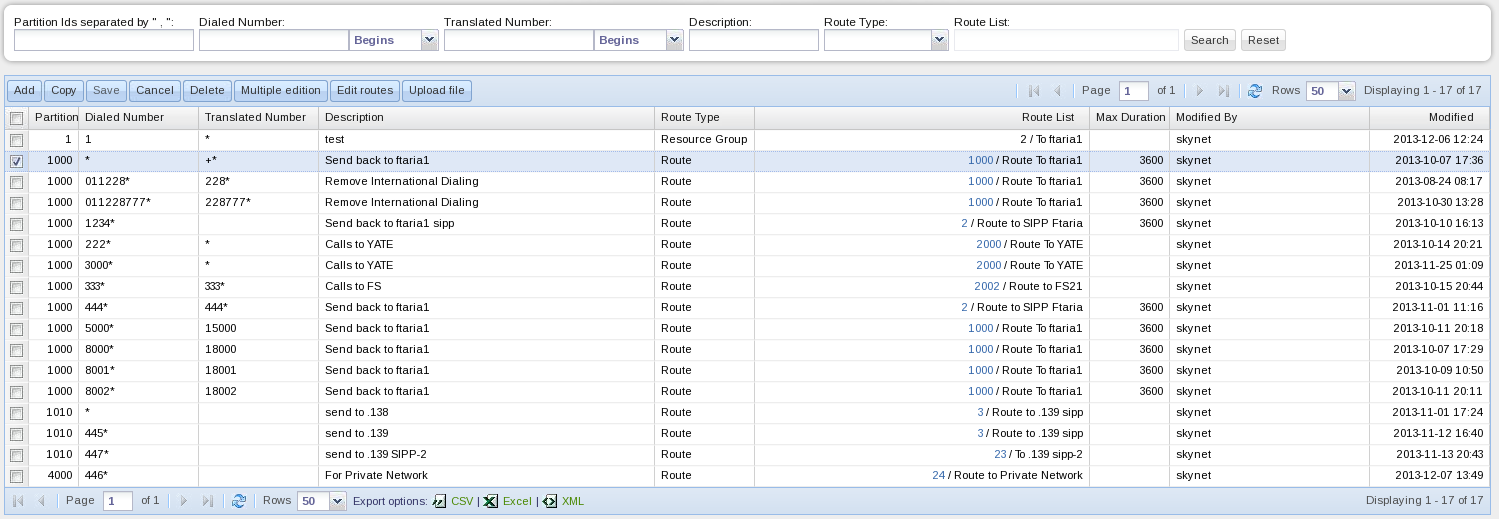
Figure 15 shows an example of the Called Translation table. What follows is a description of this table.
- Partition - This is the partition where the RG is appointed if it has not been modified in Called Pre Translation and Calling Pre Translations.
- Dialed Number - This is the called party or range of dialed numbers.
- Translated Number - Although the DNI is formatted in Called Pre Translation, it is also possible to do it in Called Translation. In that case this field is used to specify the adjustment in the DNI.
- Description - This field tells you the purpose of the Called Translation. For example, blocking of fraudulent calls, translation for testing purposes, or routing of specific numbering range.
- Route or Fw. Partition - The Route or Forward Partition fields contain the route of the call or numbering range. The Fw. Partition is part of the Called Translation Table.
- Max. Duration - This parameter is used to control the length (in seconds) of calls. In this field you can program the disconnection of calls suspiciously long.
- Modified - The system automatically fills this field with the current date of creation or modification of the translation.
The addition and deletion of Called Translation records follow the same steps explained in Calling Pre Translation.
Make use of the âMultiple Editionâ functionality to edit Called Translation records. Figure 16 shows an example of multiple edition where the series of numbers that begin with 5025311 will have a new route assigned to them, in this example route 99.

To edit the routes assigned to an existing Called Translation:
- Select the check box next to the translation(s) you want to edit the route.
- Click on âEdit Routesâ. The system will display the window for route edition (Figure 17). This window is explained in detail in the menu option for âRoutesâ.
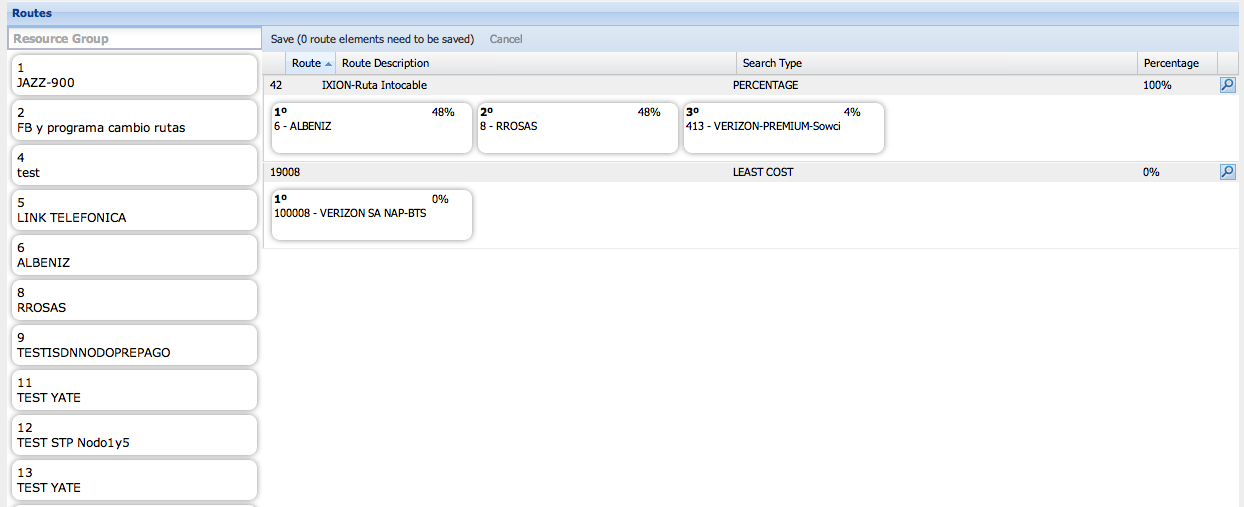
- Make the changes in the routes and click on âSaveâ to confirm them or âCancelâ to discard them. In both cases a confirmation window will appear.
Called Post Translation
Called Post Translation refers to the DNI handling process to adjust the numbering format to your providerâs requirements. It is here where the RG is linked to a group of outgoing IP.
Figure 18 shows the table that comprises the Called Post Translation records that run in your switch.

The field âGatewayâ refers to the list of IP addresses defined in the menu option âGateway Listâ. These are the providerâs IP addresses.
To create a Called Post Translation table:
- Click âAddâ to create a new Translation table. The following window will appear:

- Type the Post Translation Partition or use the arrows to scroll up and down. If the partition already exists you will see a text box saying, âPost Translation âxxxxâ already existâ.
- Type a brief description of the post translation table if required.
- Click âAddâ to create a translation record in the table (Figure 20) and fill in the fields Dialed Number (DNI) and Gateway. Fill in the fields Translated Number, Translated NOA, and Description if required. The field Gateway Description is filled automatically by the system.
- Click âAddâ again to create more translation records.
- Click âSaveâ to confirm the addition or âCancelâ to discard them.

To edit an existing Post Translation Table:
- Select the check box next to the translation and click on âEditâ. The following window with editable fields will open:

- Edit data and/or add/delete translation records to the table.
- Click âSaveâ to confirm the changes or âCancelâ to discard them.
Calling Post Translation
Calling Post Translation refers to the ANI handling process to adjust the numbering format to the providerâs requirements
Figure 22 shows the table that comprises the Calling Post Translation records that run in your switch.

In some cases your provider may request that the field NOA (Nature of Address) is adjusted reflecting the nature of the ANI. The field âTranslated NOAâ refers to the adjustment required by your provider to clarify whether it is an international, or national number.
The creation, deletion and edition of Calling Post Translation records follow the same steps previously explained.
